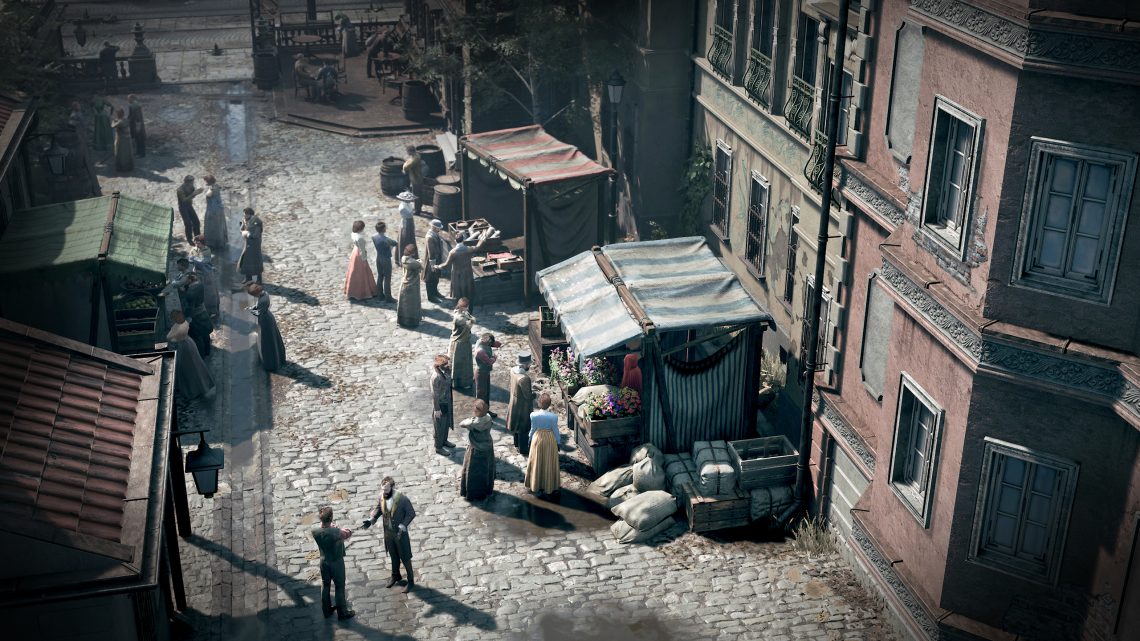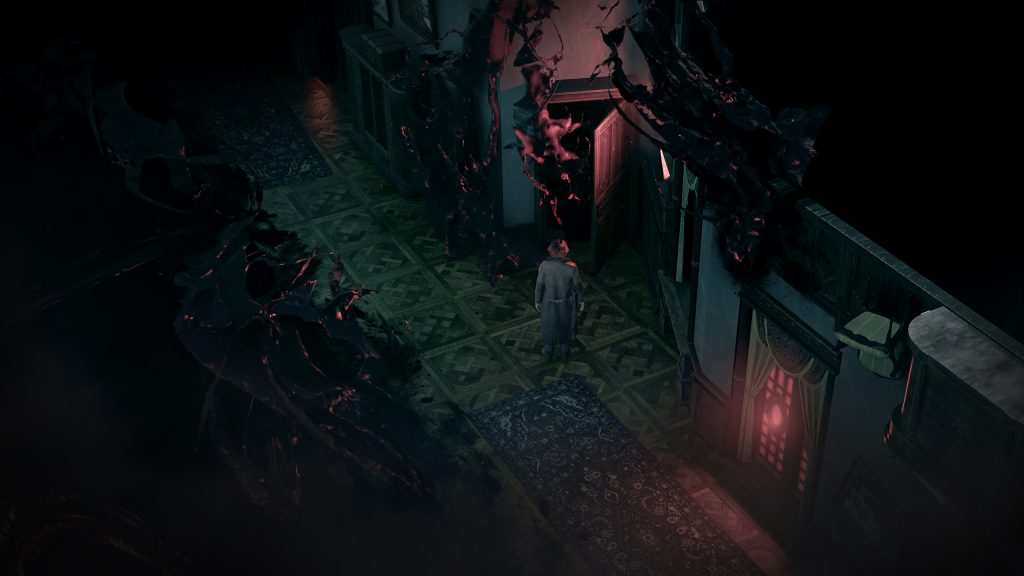
Warsaw you don’t know – interview with the creators of The Thaumaturge
In the first decade of the 20th century, Warsaw was a place full of contrasts, and by some it was even called the Paris of the East. That’s why I’m so looking forward to The Thaumaturge! I managed to talk to the creators about how they plan to achieve this specific “magic” and atmosphere.
Content translated automatically with GTranslate!
The title of The Thaumaturge is the responsibility of the creators of Seven: The Days Long Gone and in my opinion it is a great recommendation. But how to show this almost mythical Warsaw that everyone has heard about, but do we realize what it actually looked like? Do we still feel it? Maciej Zakowicz, Lead 3D Enviro Artist, agreed to answer my questions.
Warsaw, like from mythical stories
Bartłomiej Baranowski: Where did you draw inspiration from when creating Warsaw from the beginning of the 20th century?
Maciej Zakowicz: Even though in Thaumaturg we get to know Warsaw from an alternative reality, we did not want to change it too much to avoid associations with broadly understood “high fantasy”. We wanted to reflect the atmosphere of the city from that period. Nowadays, the greatest source of all information is, of course, the Internet. We managed to find the plans of the no longer existing, pre-war Warsaw.
BB: So you used archival photos and maps?
MZ: They were very helpful for another reason as well. As we well know, our capital was almost completely destroyed during World War II. Many iconic places, buildings and even entire districts have disappeared forever. Photography came to the rescue and was already quite popular at the end of the 19th century. Digitized collections of old photos have become a mine of invaluable knowledge for us.

We found particularly valuable materials on websites related to the preservation of cultural heritage, such as polona.pl or fotopolska.eu.
The virtual capital of years ago
BB: How will you show the connection between fantasy and the real city through the urban planning of the location and interior design?
MZ: The urban planning of the locations in Thaumaturg is the result of certain compromises. On the one hand, we cared about the greater or lesser historical correctness of the recreated places, and on the other hand, we had in mind the gameplay itself and how (and whether) the player would find his way in the world we created. Not everything that looks good on a city map works well in an isometric game.
BB: How did you want to achieve visual distinction in the creation of the world?
MZ: The issue of the impact of the immaterial world on the real one has been the subject of countless discussions in the team. The concept of “magic”, which was initially visible in urban space as red dust – vitriol settling everywhere, ultimately lost out to a more subtle approach.

Red became the domain of dimensions related to emotions, and thus to thaumaturgy and salutators. It remains a common denominator for many visual effects in the game, but it no longer has a direct impact on the physical space. This does not mean, of course, that the inhabitants of “our” Warsaw are not, more or less consciously, under the influence of salutators – magical beings that prey on people’s emotions.
As in our real world, also in this imaginary one, painters, artists, architects and writers find inspiration in sources known only to them, and the physical reflection of their work are, among others, texts, graphics, architectural details that we have the opportunity to admire during exploration. Let’s put a dot here so as not to spoil players’ search for the mentioned elements with a spoiler .
Get to know old Warsaw
BB: Have you included any iconic buildings of the no longer existing Warsaw in the game?
MZ: On the one hand, the Warsaw we presented in Thaumaturg belongs to a parallel dimension in which we will encounter magic and the Salutors, but on the other hand, its concept was based on an existing city. That’s why we wanted to preserve the spirit of the metropolis from the turn of the century. As we mentioned earlier, archival materials turned out to be very helpful. Due to the scale of war destruction, most locations only exist in black and white photographs from over 100 years ago.

In a sense, Thaumaturge takes us on a journey back in time to places that no longer exist, to the capital of the country that was once called the “Paris of the East”. Thanks to the game, we will visit no longer existing places and buildings that once decorated the city: Vienna Station, “Gościnny Dwór” (an oval city market with beautiful arcades and colonnades), Green Square, but also those that survived or were rebuilt, such as the Cathedral of Saint Mary Magdalene , the Church of the Holy Trinity or the Nożyk Synagogue.
BB: Warsaw at that time was a real architectural pearl, but also a melting pot of all cultures. How do you plan to present this in the game?
MZ: In Thaumaturg, our protagonist, Wiktor, travels through both rich, dynamically developing districts and those with a much worse reputation. On the one hand, we will visit the showrooms of Warsaw’s Śródmieście district, and on the other, we will venture into the muddy but extremely interesting and bustling areas of Port Praski, Powiśle and Grzybowska Street.
We must remember that Warsaw at the turn of the century was, firstly, in the Russian sphere of influence, and secondly, it was indeed a real cultural melting pot inhabited by people of different religions, coming from different backgrounds and representing very different interests. We will have the opportunity to learn about the fate of representatives of all the mentioned groups while traveling through the districts of the capital.
Technology and difficulties
BB: Last question. What was the most difficult thing about creating Warsaw from that time?
MZ: It turned out to be difficult, perhaps not necessarily due to the period we were mapping, to present many districts in a diverse way. In the initial stages of development, we struggled with the lack of sufficient recognition.

Giving each of them an individual character took much more time than we initially planned and required us to use many clever visual treatments (e.g. to further distinguish the two districts – Śródmieście Górne and Dolne – in both of them we used sidewalk surfaces diversified in terms of materials and colors ).
BB: Did you have to make any compromises when creating the city?
MZ: From a technical point of view, the challenge was to present different districts of the city in an interesting and at the same time “condensed” way. The isometric camera has its own rules, and during exploration we observe the game world from above. This perspective brings with it many problems. Tall buildings have become problematic.

Early prototypes have already shown that when designing locations we will have to significantly reduce the height of architectural objects and introduce gradual gradation. Although all tenement houses in the game have been reduced by an average of 50%, they have not lost any of their character. Wide, cobbled alleys became an additional problem for the isometric perspective. A screen filled with huge swaths of undifferentiated surface is not something we want to see in a game.
For this reason, at Thaumaturg we decided on an approach often used when creating mockups. We reduced monotonous areas as much as possible and packed the locations with details. The resulting “dioramas” are the size of one or two city blocks and contain the very essence of a given district.
BB: Thanks for the answers!
If you like the content I create, please feel free to leave me something for coffee! This will help me, for example, pay for the server;)
The questions were answered by: Maciej Zakowicz, Lead 3D Enviro Artist.
Thanks!



